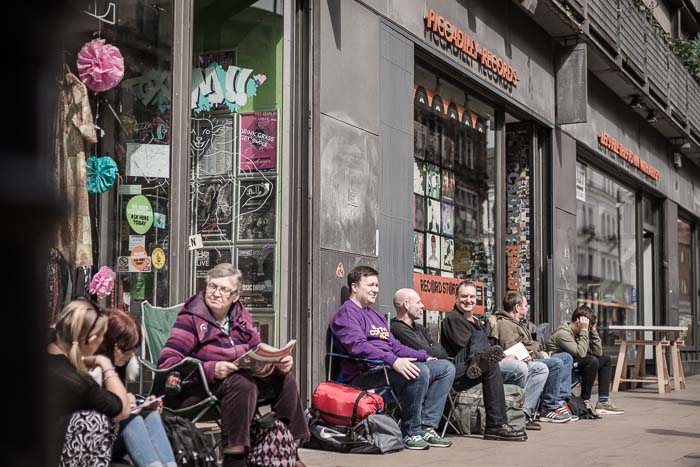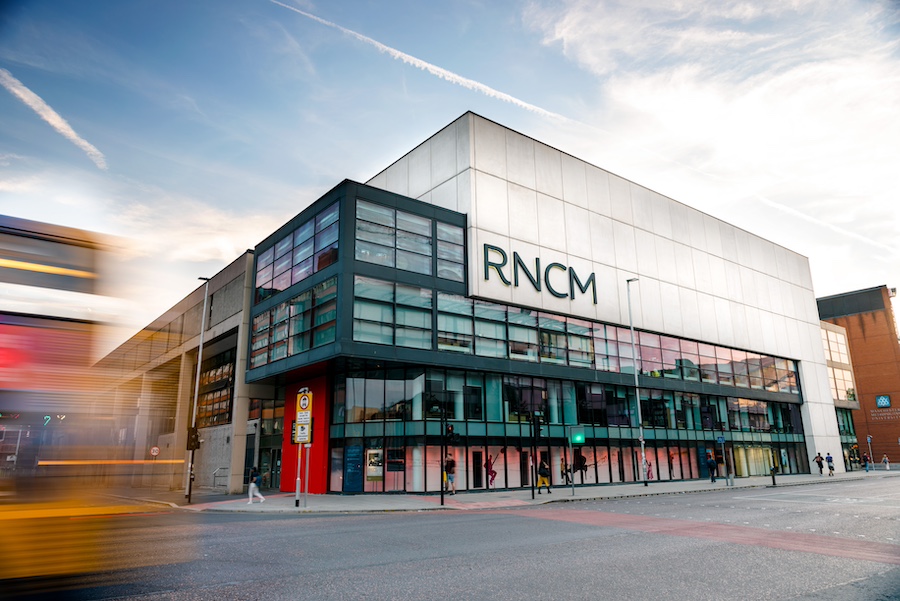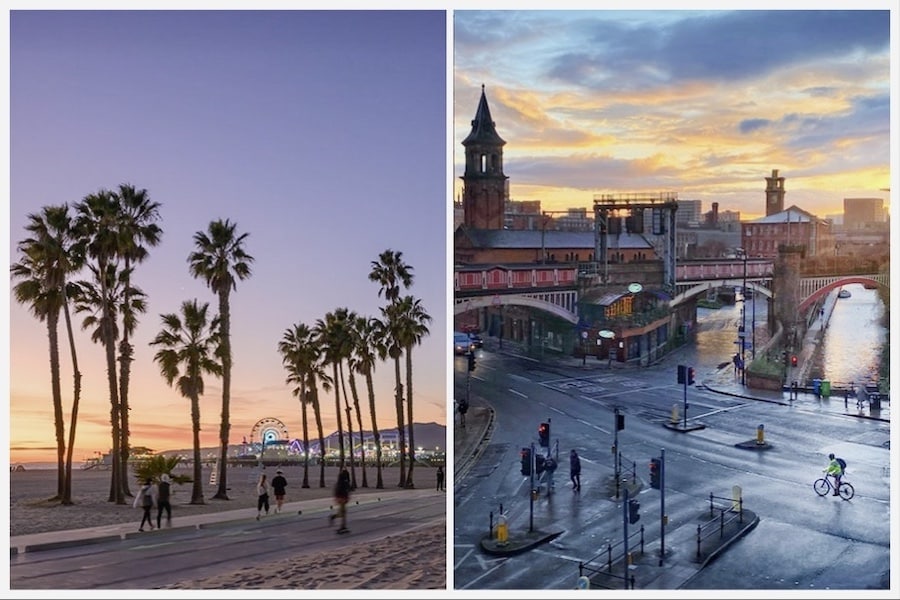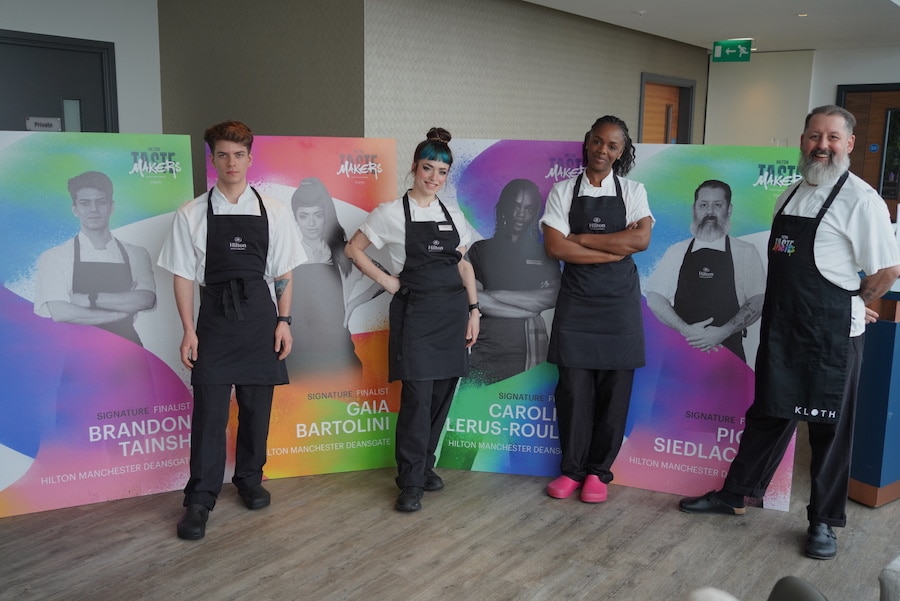How the enigmatic ‘Monet of Manchester’ inspired L.S Lowry
- Written by Thom Bamford
- Last updated 1 year ago
- Art & Design, Community, Cornerstone, Culture, Featured, History, People
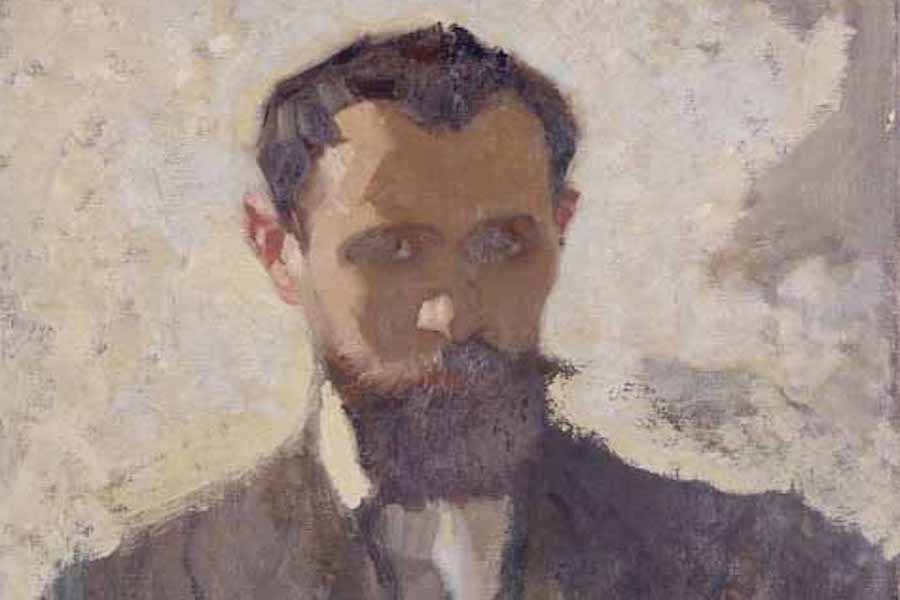
In the bustling landscape of early 20th-century Manchester, where the smoke of industry mingled with the dynamism of daily life, a French artist named Adolphe Valette quietly wove the threads of Impressionism into the city’s artistic fabric.
Little did he know that his influence would be profoundly imprinted on the canvases of one of the twentieth century’s most iconic painters, L.S. Lowry.
The Enigmatic Impressionist Aldophe Valette

Adolphe Valette, born in Saint-Etienne, France, found an unlikely canvas in the industrial heart of Manchester.
His artistry, rooted in Impressionism, brought a breath of fresh air to the city, invigorating young artists at the Municipal School of Art, including a budding L.S. Lowry.
While Lowry’s name is now synonymous with the industrial landscapes of Manchester, the early chapters of his artistic journey were penned under the tutelage of the enigmatic Valette.
When L.S Lowry met Adolphe Valette
In 1905, at the age of 17, L.S. Lowry stepped into the Manchester Municipal School of Art, embarking on a journey that would shape the trajectory of his artistic expression. It was here that he encountered the 28-year-old Adolphe Valette, a master of the late Impressionist movement.
Valette’s talent did not lie merely in his ability to create; he was a passionate disciple of Impressionism, a movement that he transplanted from the vibrant art scene of Paris to the industrial landscape of Manchester.

Lowry, in his early artistic pursuits, did not immediately embrace the style for which he would later be celebrated. Instead, he painted in harmony with Valette’s pictorial approach, a testament to the profound influence of his French tutor.
Speaking on Valette, Lowry expressed great admiration for his tutor, who taught him new techniques and showed him the potential of the urban landscape as a subject.
He called him “a real teacher … a dedicated teacher” and added: “I cannot over-estimate the effect on me of the coming into this drab city of Adolphe Valette, full of French impressionists, aware of everything that was going on in Paris”
The Impressionist Palette in Manchester
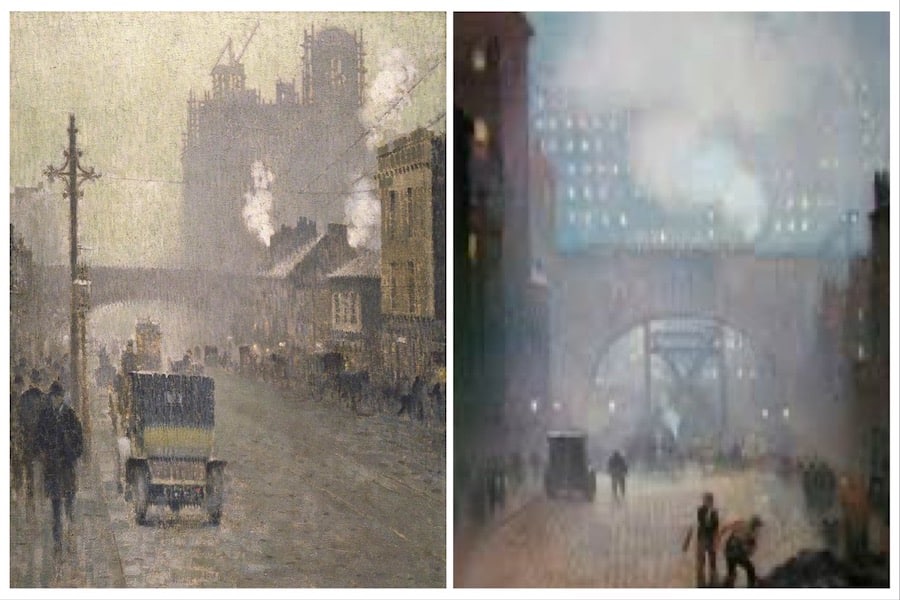
Valette’s teachings extended beyond the classroom, urging his students to embrace the principles of the French Impressionists.
His emphasis on plein air painting, capturing the fleeting nuances of light, and depicting the modern life of cities resonated deeply with Lowry.
As the industrial landscape of Manchester unfolded before their eyes, both artists sought to encapsulate the spirit of the city in their works.
Lowry’s early paintings, such as “Clifton Junction, Morning” and “Clifton Junction, Evening” from 1910, bear the unmistakable imprints of Impressionism.
Painting en plein air near his Pendlebury residence, Lowry studied the variations of light, experimenting with impasto and rich color palettes, all under the watchful influence of Valette.
Valette’s Manchester and Monet’s London
Valette’s exploration of Manchester’s industrial landmarks, particularly the Manchester Ship Canal, drew parallels with the work of renowned Impressionist Claude Monet, who often painted the River Thames.
Their shared commitment to studying the changing effects of light on industrial scenes further solidified the connection between Valette’s teachings and the broader Impressionist movement.
In several early works, Lowry’s kinship with Valette and the Impressionists becomes evident.
Vibrant colours, visible brushstrokes, and a bold embrace of movement characterise pieces like “Country Lane,” drawing parallels to Valette’s quick sketches and studies of Manchester and its surroundings.
The Evolution of Lowry’s Style: From Apprentice to Master
Lowry’s journey through Impressionism was not a stagnant affair.
His early attempts between 1915 and 1920, though dismissed by his teachers, marked the tentative steps towards finding his own voice amidst the industrial reality of Pendlebury.
It wasn’t until the guidance of art critic Bernard Taylor that Lowry’s unique approach to the industrial landscape began to emerge.
Valette’s departure in 1928 became a turning point for Lowry.
Freed from the direct influence of his master, he started to stand on his own feet artistically, giving the industrial landscapes the artistic recognition they deserved.
The Legacy of Adolphe Valette
You can now see most of his most acclaimed paintings are urban landscapes of Manchester, now in the collection of Manchester Art Gallery.
Despite the indelible mark left by Adolphe Valette on Manchester’s artistic heritage, his name remains relatively unknown.
If you’re interested in seeing his work, there’s a dedicated gallery at – Manchester Art Gallery aiming to bring their work into the spotlight.
You can find out more on their website here.
The eagle-eyed amongst you might have spotted a blue plaque dedicated to him in the city.
It is located on the site of Manchester School of Art on Grosvenor Street, in Manchester, inscribed: Adolphe Valette (1876–1942), French painter and teacher in the School of Art 1907–1920.
- This article was last updated 1 year ago.
- It was first published on 3 January 2024 and is subject to be updated from time to time. Please refresh or return to see the latest version.
Did we miss something? Let us know: press@ilovemanchester.com
Want to be the first to receive all the latest news stories, what’s on and events from the heart of Manchester? Sign up here.
Manchester is a successful city, but many people suffer. I Love Manchester helps raise awareness and funds to help improve the lives and prospects of people across Greater Manchester – and we can’t do it without your help. So please support us with what you can so we can continue to spread the love. Thank you in advance!
An email you’ll love. Subscribe to our newsletter to get the latest news stories delivered direct to your inbox.
Got a story worth sharing?
What’s the story? We are all ears when it comes to positive news and inspiring stories. You can send story ideas to press@ilovemanchester.com
While we can’t guarantee to publish everything, we will always consider any enquiry or idea that promotes:
- Independent new openings
- Human interest
- Not-for-profit organisations
- Community Interest Companies (CiCs) and projects
- Charities and charitable initiatives
- Affordability and offers saving people over 20%
For anything else, don’t hesitate to get in touch with us about advertorials (from £350+VAT) and advertising opportunities: advertise@ilovemanchester.com


Review: The Koala Who Could at LOWRY is ‘an uplifting journey of courage and change’







